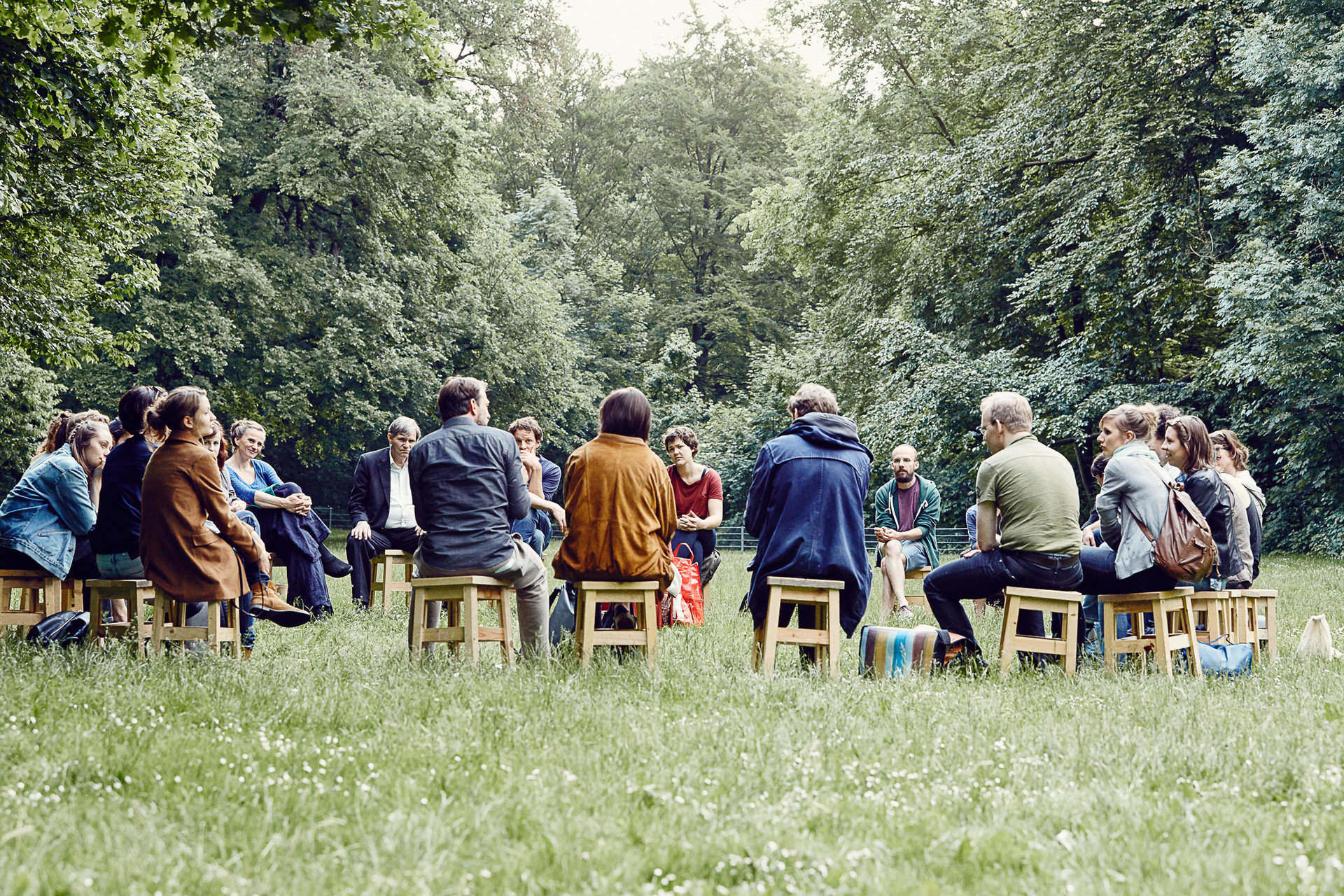
Of course, in the context of the theatre the pursuit of authenticity always results in a paradox, because the only way to achieve authenticity seems to be a complete dismantling of the inauthentic theatrical system of concept, direction and dramaturgy. Van den Berg is consistent: she even let the basic idea for Building Conversation grow from meetings with participants. A good place to start with that is the site-specific theatre festival Oerol, with its broad and diverse audience. In 2013 Van den Berg organised a public brainstorm on Terschelling about the question what should be built on the island. The answer of the Oerol visitors was: a space for conversation. Van den Berg took up this answer. Not that she was going to make a performance as a conversation – on the contrary, the aim was to make the metaphor, the as if-construction, disappear. Building Conversation is a conversation. That is how it came about that I was called before the event by the production manager, who requested me not to bring a notebook. Whoever stays in the role of a spectator, like journalists often tend to do, may as well stay away. Just to bring yourself will be enough.
In Building Conversation a small group of participants leaves on a trip together for a five-hour enterprise. Every participant has chosen a specific conversation technique: the conversation without words, the Socratic conversation or the Bohm-method, based on concepts from quantum physics. Every groups leaves for a different spot on the island. There are no introductions made, whoever is curious about the names and professions of his colleagues, has to make inquiries himself. With about seven strangers and Van den Berg I march into the woods for the experimental conversation. Today this will proceed according to the Dissensus theory of the Walloon political scientist Chantal Mouffe. Van den Berg will look for the biggest possible contrast within the group, because, says Mouffe, it is important to be agonists, to realise and recognise that there are differences, without becoming antagonists – enemies. After a walk of about half an hour we reach an open space with a wooden house on which only a roof is placed. First job: build the house together by sliding the panels into the sides, pulling up stools, placing blankets. Someone spontaneously troubles himself with the fire, wood is gathered. The conversation is started by the search for a contradiction, a dividing line within the group.”
